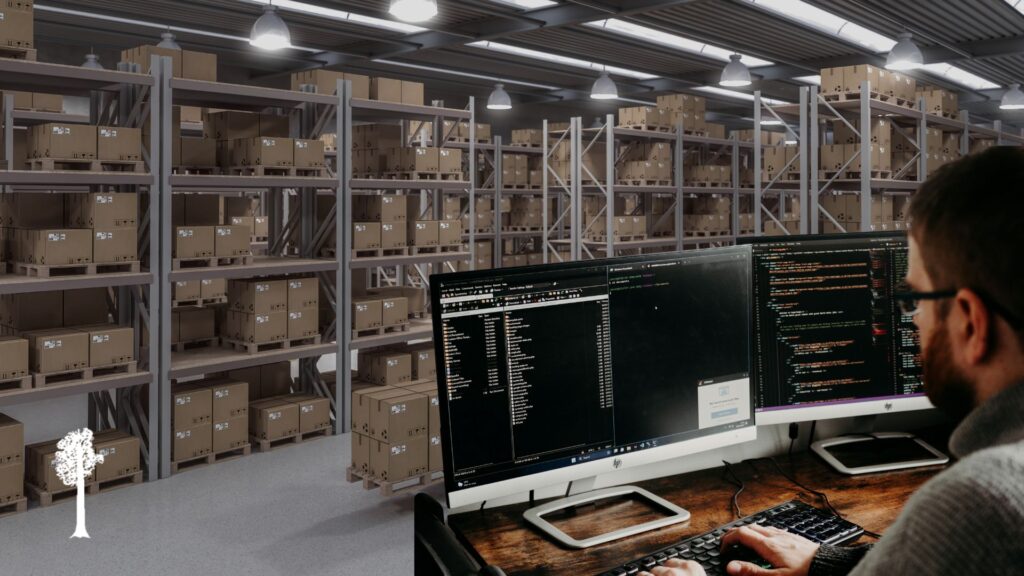Introduction
Warehouses and 3PLs today face mounting pressure to do more with less: faster fulfillment, tighter SLAs, and increasing customer expectations for visibility and accuracy. Yet many are still tied to legacy systems — disjointed, inflexible tools that slow operations and limit growth.
The solution isn’t always a total rebuild. By combining the flexibility of low-code platforms with the power of modern WMS and ERP solutions, distribution leaders can gain the agility they need to keep pace with today’s demands.
The Cost of Holding Onto Legacy Systems
Legacy systems often bring more pain than value:
- Inaccurate inventory: Errors go unnoticed until orders reach the dock.
- Manual workarounds: Teams spend hours reconciling data instead of driving improvement.
- Lack of visibility: Disconnected tools make it nearly impossible to forecast or optimize.
- Competitive drag: Outdated tech is a liability when speed, accuracy, and real-time data define customer trust.
For many distributors, the greatest cost isn’t licensing fees — it’s the opportunity lost when systems can’t keep up.
The Low-Code Advantage in Supply Chain
Low-code platforms are reshaping how businesses adapt. According to Gartner, 80% of mission-critical applications will be built on low-code platforms by 2029. For warehouses, this means greater agility without the slow, costly customization of traditional development.
Three primary models matter for distribution leaders:
- Built-in low-code features: Limited but helpful toggles and workflow adjustments inside modern WMS platforms.
- Standalone low-code platforms: Flexible layers built on top of your WMS, though often complex to integrate.
- Embedded low-code architecture: Platforms with low-code built into their core (like leading WMS solutions from Infor and Tecsys), allowing scalable customization, compliance management, and streamlined governance.
The third approach is particularly powerful for growing 3PLs, where agility and compliance can’t come at the expense of reliability.
Why Modern WMS Matters More Than Ever
Low-code flexibility is only part of the equation. To meet today’s challenges, warehouses need systems built for:
- Real-time visibility: Unified inventory data across customers and sites.
- Configurable workflows: Tailored to multiple SLAs without endless IT intervention.
- Automation integration: Tools like Locus Robotics help reduce labor strain and boost throughput.
- Scalable growth: Faster onboarding of new clients or locations without disrupting operations.
This is where platforms like Infor CloudSuite Distribution and Tecsys WMS stand out, giving distributors both the structure and flexibility to adapt.
The Agility Advantage
Agility is no longer optional. For 3PLs and distributors, the ability to pivot quickly means:
- Catching errors before they hit the dock.
- Meeting complex customer requirements with confidence.
- Onboarding new clients faster than competitors.
- Freeing IT teams to innovate rather than patch outdated systems.
With modern WMS built on embedded low-code platforms, warehouses gain both operational control and flexibility — without the cost or risk of endless workarounds.
Conclusion
The future of fulfillment doesn’t run on spreadsheets, disconnected tools, or systems built for yesterday’s demands. It runs on platforms that combine real-time visibility, automation readiness, and flexible workflows.
For distributors and 3PLs ready to break free from legacy systems, the path forward is clear: modern WMS solutions powered by low-code architecture. The result isn’t just efficiency — it’s agility, scalability, and a foundation for long-term growth.
Ready to explore what this could look like in your warehouse? Contact Sequoia Group for a complimentary consultation.



